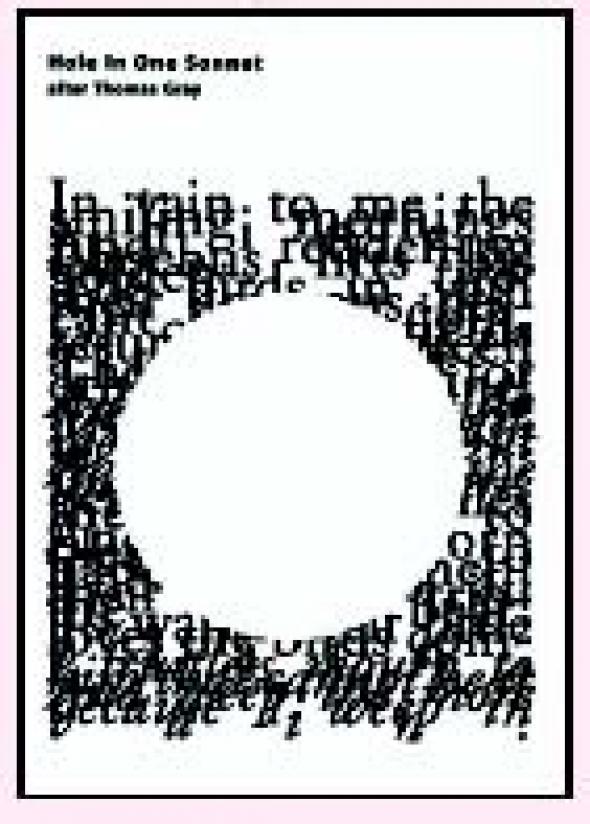Fashionable Noise
Fashionable Noise: On Digital Poetics contains a selection of half a dozen pieces of writing, all of which can be seen as in some sense process-generated; the co-work of Brian Kim Stefans and certain of his digital familiars – demons that drive both him and his media. Stefans mixes theory and poetry seamlessly and apparently effortlessly although, as he readily acknowledges, the burden of work is often shared by generative algorithms. In the midst of the book’s other pieces – a transcribed IRC dialogue, some ‘Reflections on Cyberpoetry’ (recasting Eliot on vers libre), a ‘dos and donts’ of new media practice (derived from Blake’s ‘Proverbs of Hell’), more ‘Notes on New Poetrie,’ and ‘A Poem of Attitudes’ – the main portion of the book consists of ‘a critique of hypertext’. This chapter, for me, was the book’s demonic heart, one of the most considered, wide-ranging, creative and critical treatments of writing in networked and programmable media that I have come across.
‘Stops and Rebels’ is constructed around a poem that has been algorithmically collaged from a number of source texts. The bulk of the writing, however, consists of footnotes on the poem, written as if by ‘an over-zealous student’. Chiefly, the piece is clear discursive prose, but the structure makes it more useful for later reference since individual notes tend to organise around distinct topics: noise and interpretation; carnival and database aesthetics; Language poetry; artificial intelligence; ambient poetics; fashionable coding, etc. Labelled as articles, these notes might appear as fragments from a lost or future encyclopaedia of new media rhetoric. ‘Fashionable Noise’ signifies far more than mediaspeak irony or the author’s self-denigration. At first it seems to point to the transient, modish effects of a ‘big noise’ on the fringes of poetic practice and literary art. These challenging, negative connotations would not, I suspect, be entirely disavowed by Stefans, but they are self-contextualised, embedded in a title phrase that proves to be generative and engaged. The two words could, in fact, be set as a one-line emblematic poem with the current subtitle promoted to title. ‘Fashionable’ here is derived from the verb as well as from its frequently foppish noun. It indicates that the ‘noise’ of digital poetics is programmed, manipulated, ‘fashioned fit’ and shifted so as to work with and influence literary and social convention. Noise is far from being mere linguistic waste or excess. It is many things in Stefan’s text: the stuff and matter of language on the cusp of symbolic meaning, the non- or posthuman aspects of new media writing, algorithm itself and its fragmentary, found, chance-selected sources. This is ‘noise’ as the representation of a downgraded but integral aspect of signification. Noise gains rights in this context because the entire world of language is the poet and writer’s proper (if potential) palette – not those few notes plucked out of the soundscape by convention and tradition, but everything from letters to their dreamlife, from noise to silence. Because new media makes poetic noise fashionable, it becomes impossible for artists to ignore these admittedly fashionable ways of ‘making it new’.
Fashionable Noise is all but uniquely responsive to both traditional and ‘bleeding edge’ language art practice. As a critique of hypertext begun in 1996, ‘Stops and Rebels’ was way ahead of its time. It remains so, since much of its close analysis of writing in programmable media is still poorly understood, while in practice, there are few writers like Stefans who are also able to program what they prescribe. Fashionable Noise contains code segments that will reconfigure digital poetics.
John Cayley
Fashionable Noise: On Digital Poetics // Brian Kim Stefans // Berkeley: Atelos // 2003 // pb available from SPD [http://www.spdbooks.org ] US$ 12.95 plus delivery, see also [http://www.atelos.org/fashionable.htm ] // ISBN 1-891190-14-8
Mute Books Orders
For Mute Books distribution contact Anagram Books
contact@anagrambooks.com
For online purchases visit anagrambooks.com








